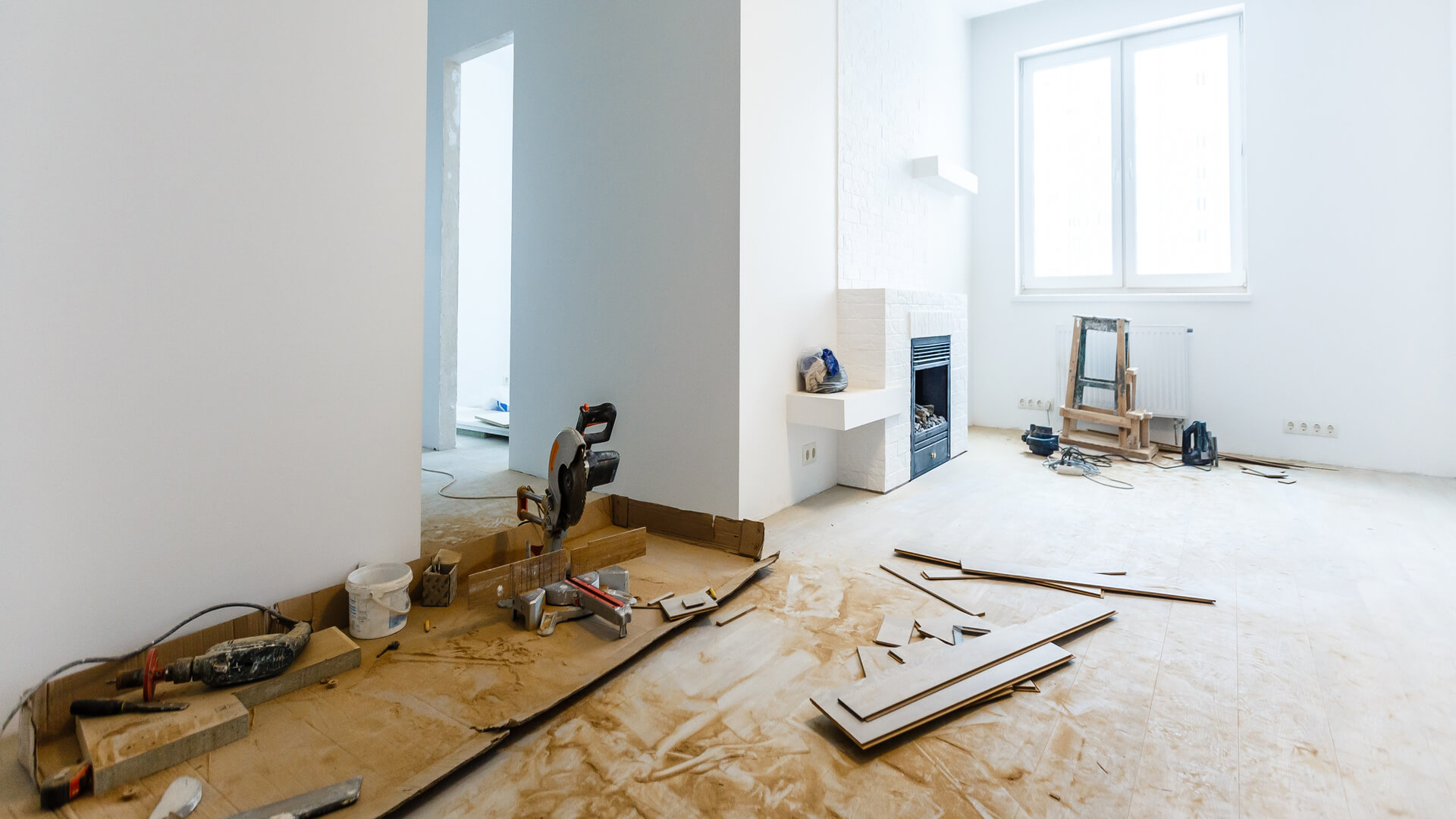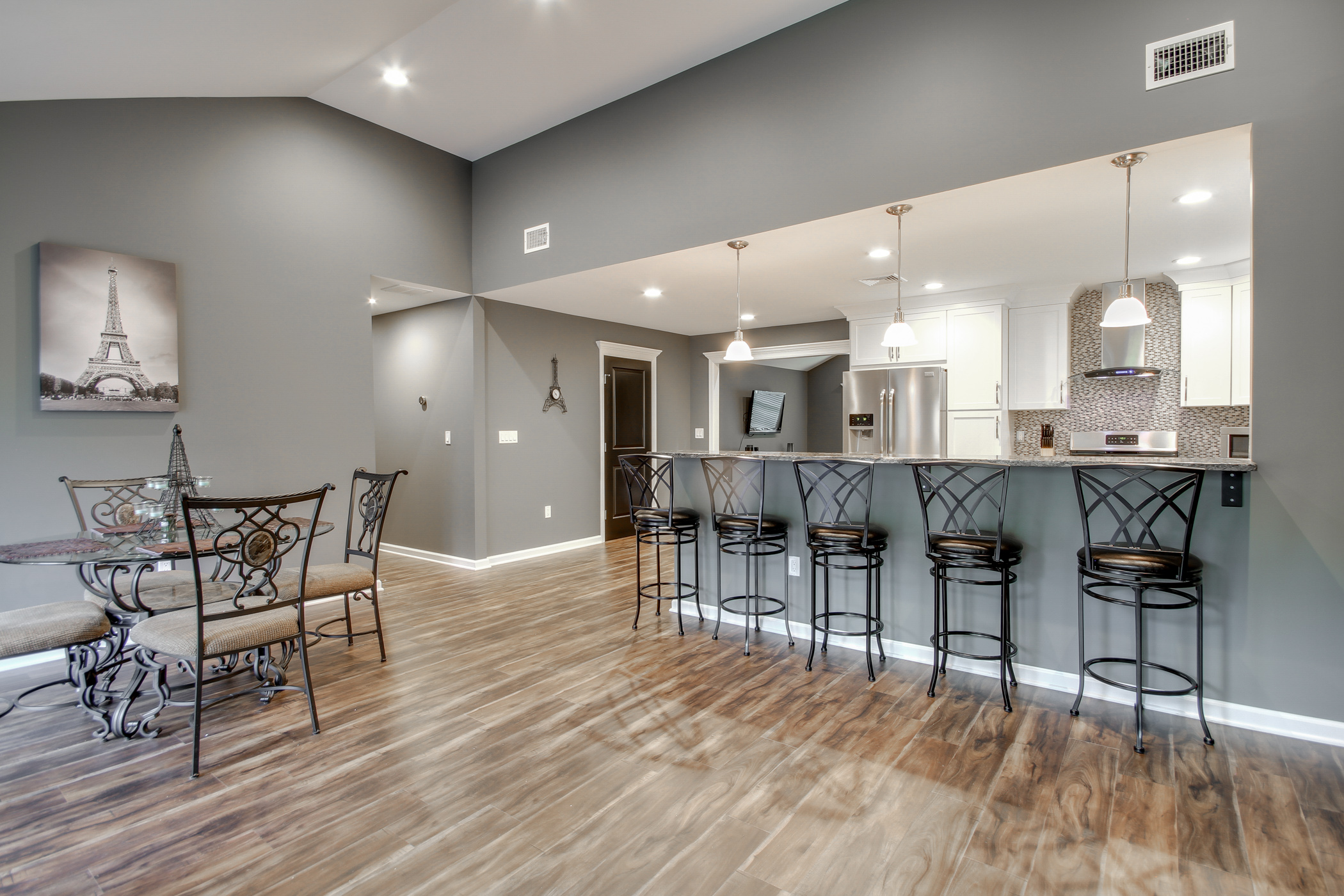Unlocking the Potential: Full Home Renovation Services
Embark on a transformative journey with Full home renovation services, where every corner of your house holds the promise of a new beginning. From envisioning your dream space to witnessing the meticulous craftsmanship unfold, this comprehensive guide dives deep into the realm of complete home transformations.
As we delve into the intricacies of planning, design, construction, and material selection, you'll discover the art of turning a house into a personalized sanctuary that reflects your unique style and preferences.
Overview of Full Home Renovation Services
When it comes to full home renovation services, the scope typically involves a comprehensive overhaul of the entire property, including both interior and exterior areas. This can encompass a wide range of projects, from structural changes to cosmetic upgrades, aimed at transforming the property into a more functional and aesthetically pleasing space.Some examples of what constitutes a full home renovation include:
- Gutting and remodeling the kitchen and bathrooms
- Installing new flooring throughout the house
- Updating electrical and plumbing systems
- Adding new fixtures and appliances
- Repainting or re-siding the exterior of the home
- Redesigning the layout of rooms to improve flow and functionality
Opting for a full home renovation as opposed to partial renovations offers several benefits. One of the key advantages is the ability to address all desired changes and upgrades in one cohesive project, ensuring a more unified and cohesive design aesthetic throughout the home.
Additionally, a full renovation can increase the overall value of the property significantly, making it a worthwhile investment for homeowners looking to enhance both their living experience and resale potential.
Planning Phase
When embarking on a full home renovation, the planning phase plays a crucial role in ensuring the success of the project. It involves laying down the foundation for all the work that will follow, from setting a realistic budget to creating a detailed timeline.
Steps Involved in Planning a Full Home Renovation
- Assess the current state of the property: Before making any plans, it's essential to evaluate the existing condition of the house to determine what needs to be renovated.
- Set a realistic budget: Determine how much you are willing to spend on the renovation project and allocate funds accordingly to avoid overspending.
- Hire a professional contractor: Working with a reputable contractor can help streamline the planning process and ensure that the renovation is carried out efficiently.
- Create a detailed renovation plan: Artikel the specific changes you want to make to each area of the house, including design preferences and materials to be used.
- Obtain necessary permits: Depending on the scale of the renovation, you may need to secure permits from local authorities before starting any construction work.
Importance of Setting a Realistic Budget
Setting a realistic budget is crucial during the planning phase of a full home renovation as it helps you avoid financial pitfalls and ensures that you have enough funds to complete the project. By carefully estimating the costs involved and sticking to your budget, you can prevent unnecessary stress and delays.
Key Factors to Consider When Creating a Renovation Timeline
- Scope of work: Clearly define the scope of the renovation project to determine how long each task will take and create a realistic timeline.
- Availability of materials: Consider the lead time for ordering materials and factor this into your renovation schedule to avoid delays.
- Seasonal factors: Take into account the impact of seasonal changes on the renovation process, such as extreme weather conditions that may affect construction work.
- Contingency plan: Include buffer time in your renovation timeline to account for unexpected delays or issues that may arise during the project.
Design and Concept Development

When it comes to full home renovation projects, the design and concept development phase is crucial in creating a cohesive and visually appealing space that meets the needs and preferences of the homeowners. This phase involves brainstorming, planning, and refining ideas to bring the renovation vision to life.
Developing Design Concepts
During the design phase, homeowners work closely with architects, interior designers, and contractors to develop design concepts that align with their desired aesthetic and functional requirements. This process typically involves creating mood boards, sketches, and 3D renderings to visualize different design options before making final decisions.
- Collaboration with Design Professionals: Professional designers play a key role in guiding homeowners through the design process, offering expertise in space planning, material selection, and design trends.
- Exploration of Styles: Homeowners may explore different design styles such as modern, traditional, industrial, or minimalist to find a theme that resonates with their personal taste.
- Integration of Existing Elements: Designers also consider existing architectural features, furniture, and decor elements to ensure a harmonious blend with the new design concept.
Choosing a Cohesive Design Theme
Selecting a cohesive design theme for the entire house involves considering factors such as color palettes, textures, furniture styles, and overall aesthetic preferences. It's important to choose a theme that flows seamlessly from room to room, creating a sense of continuity and unity throughout the home.
- Color Scheme: Choosing a consistent color palette or theme can help tie different spaces together and create a cohesive look.
- Material Selection: Opting for similar materials or finishes across various rooms can enhance the overall design cohesion.
- Furniture and Decor: Selecting furniture pieces and decor items that complement each other and fit within the chosen theme can contribute to a harmonious design scheme.
Role of Professional Designers
Professional designers bring valuable expertise and creative input to the design phase of a renovation project. They help homeowners refine their ideas, explore design possibilities, and make informed decisions that align with their vision and budget.
- Space Planning: Designers assist in optimizing space layout and functionality to ensure efficient use of available square footage.
- Material Selection: From flooring and lighting to countertops and cabinetry, designers help homeowners choose high-quality materials that suit their design preferences and lifestyle needs.
- Attention to Detail: Designers pay close attention to details such as lighting fixtures, hardware, and accessories to elevate the overall design and create a polished look.
Construction Phase

The construction phase of a full home renovation is a critical stage where all the planning and design concepts come to life. It involves a series of steps to transform your vision into reality, ensuring that the project is completed successfully and to your satisfaction.
Typical Stages in the Construction Phase
- Demolition and Site Preparation: Clearing out the existing structures and preparing the site for construction.
- Structural Work: This includes framing, roofing, electrical, plumbing, and HVAC installations.
- Interior Finishes: Installing drywall, flooring, painting, and other cosmetic finishes.
- Exterior Finishes: Completing the exterior of the home, such as siding, windows, doors, and landscaping.
- Final Inspections and Clean-up: Ensuring that the renovation meets building codes and cleaning up the site for final presentation.
Managing Contractors and Tradespeople
Effective management of contractors and tradespeople is crucial for the success of the construction phase. Here are some tips:
- Clear Communication: Maintain open lines of communication to ensure everyone is on the same page.
- Regular Site Visits: Monitor progress and address any issues promptly.
- Quality Control: Inspect workmanship to ensure high-quality standards are met.
- Timely Payments: Ensure payments are made on time to maintain good relationships with contractors.
Common Challenges and Solutions
During the construction phase, you may encounter challenges such as delays, budget overruns, and unexpected issues. Here's how to address them:
- Delays: Communicate with contractors to identify the cause and find solutions to get back on track.
- Budget Overruns: Monitor expenses closely and make adjustments as needed to stay within budget.
- Unexpected Issues: Stay flexible and work with your team to find creative solutions to unforeseen problems.
Material Selection
When it comes to a full home renovation, selecting the right materials is crucial to the overall success of the project. High-quality materials not only enhance the look of your home but also contribute to its durability and sustainability in the long run.
It's essential to strike a balance between aesthetics and functionality when choosing materials to ensure that your renovated home not only looks great but also stands the test of time.
Choosing High-Quality Materials
Opting for high-quality materials may come with a higher price tag initially, but the long-term benefits far outweigh the cost. Durable materials will require less maintenance and replacement over time, saving you money in the long run. Additionally, high-quality materials can improve the energy efficiency of your home, reducing utility costs in the future.
Importance of Durability and Sustainability
Choosing durable and sustainable materials is essential for the environment and your wallet. Sustainable materials are typically eco-friendly and contribute to a healthier living environment. Durability ensures that your home will withstand wear and tear, reducing the need for frequent repairs or replacements.
Balancing Aesthetics with Functionality
While it's important for your home to look visually appealing, functionality should not be compromised. Consider the practicality of materials in different areas of your home. For example, opt for water-resistant materials in bathrooms and kitchens to prevent damage from moisture.
Choose materials that are easy to clean and maintain for high-traffic areas.
Concluding Remarks

In essence, Full home renovation services offer not just a physical makeover but a profound reinvention of the place you call home. With careful planning, creative design, and expert execution, your vision can seamlessly come to life, creating a living space that resonates with your soul.